East Afghan Montane Conifer Forests
The ecoregion’s land area is provided in units of 1,000 hectares. The conservation target is the Global Safety Net (GSN1) area for the given ecoregion. The protection level indicates the percentage of the GSN goal that is currently protected on a scale of 0-10. N/A means data is not available at this time.
Bioregion: Afghan-Balochistan Drylands, Mountain Meadows & Conifer Forests (PA30)
Realm: Central Eurasia
Ecoregion Size (1000 ha):
2,013
Ecoregion ID:
694
Conservation Target:
12%
Protection Level:
4
States: Afghanistan, Pakistan
The East Afghan Montane Conifer Forests ecoregion, divided in five disjunct areas from the Eastern Hindu Kush to Central North of Pakistan, is covered by coniferous and deciduous trees. Trees in the Nuristan Province, Pakistan, the second-largest Juniper forests in the world, are more than 1,500 years old . Northern Pakistan is also the home of the endemic Balochistan Forest dormouse.
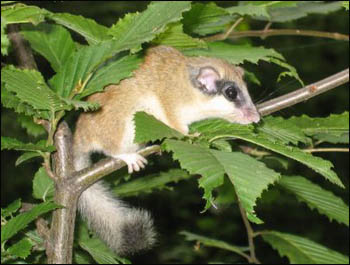
The flagship species of the East Afghan Montane Conifer Forests ecoregion is the Balochistan Forest dormouse. Image credit: Dodoni, Wikimedia Commons
This ecoregion, with five disjunct areas totalling 20,128 km2, spans from the Eastern Hindu Kush mountain range in Afghanistan to the Central North of Pakistan. Dry coniferous forests are found at lower altitude (2,100–2,500 m) where Holm Oak and Chilgoza pine are dominant. At higher altitudes (>2,500 m), monsoon rains are continuous, and temperate deciduous Deodar cedar trees are dominant. In the very moist area (>800 mm), Himalayan spruce and fir prevail while in drier areas, forest will create a dense cover, mainly of juniper. On the Pakistani side, there are two impressive mountains, Mount Chiltan at 3,194 m and Loe Nekan at 3,575 m. The average precipitation in the area is 446 mm per year. The average temperature is 9.2°C, with an average maximum of 28.2°C and an average minimum of -11.4°C. The prevailing climate is cold semi-arid.
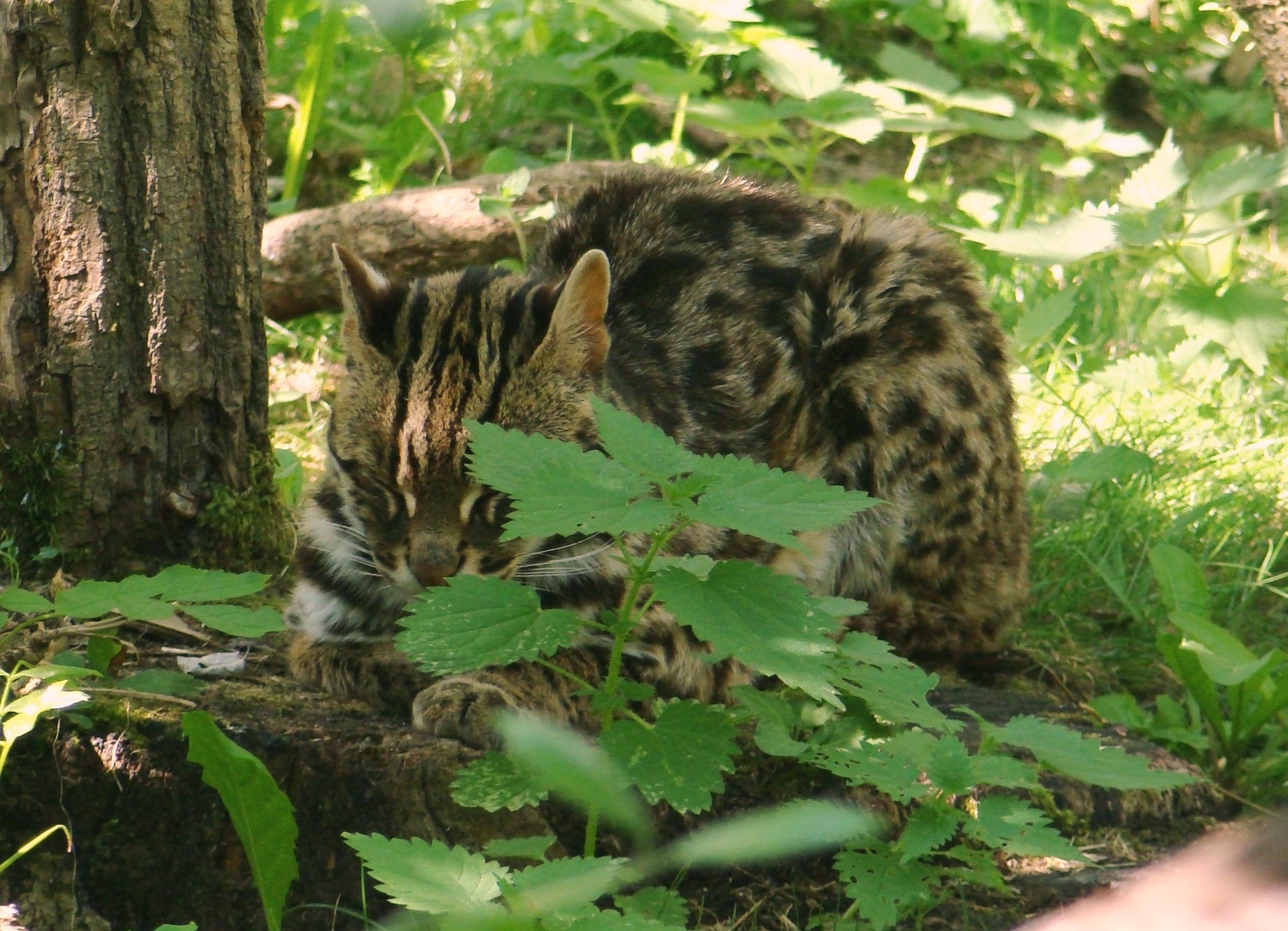
Leopard cat. Image credit: Creative Commons
This ecoregion is home to a suite of endangered and characteristic fauna of high conservation value. The vulnerable Balochistan Forest dormouse is endemic to the dry steppe juniper forest in Northern Pakistan. This area has been severely fragmented and degraded due to overgrazing by livestock, removal of wood, expanding agriculture and human settlements. Its range is also not in any protected area, which increases its conservation necessity. Other critically endangered species found in this ecoregion are the white-rumped vulture and the sociable lapwing. Endangered species include the steppe eagle, the saker falcon, the kashmir vulture and Pallas's fish-eagle. In 2014, the endangered Kashmir muskdeer was confirmed to still inhabit the Nuristan Province, in north-east Afghanistan.

Black necked grebe. Image credit: Andreas Trepte, Creative Commons
The Northern area of this ecoregion intersects with the proposed Nuristan National Park (or Nooristan National park and utilisation of wildlife resources. When proposed in 1981, this was a largely undisturbed monsoon-influenced forest where resident populations of the vulnerable Asiatic black bears and snow leopards were present. It is possible that Kashmir muskdeer might be found here as well.

Snow leopard. Image credit: Roger Blackwell, Creative Commons
The southern range of this ecoregion overlaps with the Juniper Wildlife Sanctuary Ziarat in Pakistan. This area is also an Important Biodiversity Area and a Man and Biosphere Reserve with 1,119 km2 established in 2013 to conserve the juniper forest ecosystem. It is believed to be the second-largest of its kind in the world. This species is one of the most long-lived trees in the world, with mature specimens over 1,500 years of age. In Ziarat, the juniper is very important to local livelihoods. There are other Important Bird Areas in this ecoregion, such as Safed Koh in the upper zone of a mountain range south-east of Kabul bordering North-West Pakistan, composed of forests of Deodar cedar, Chilgoza pine and the Bhutan or Himalayan white pine. Intersecting the northern area of the ecoregion is the Pech and Waygal Valleys Important Bird Area with steep-sided valleys and forests of oak, conifers, and juniper. This is a typical and representative area for Himalayan breeding avifauna.
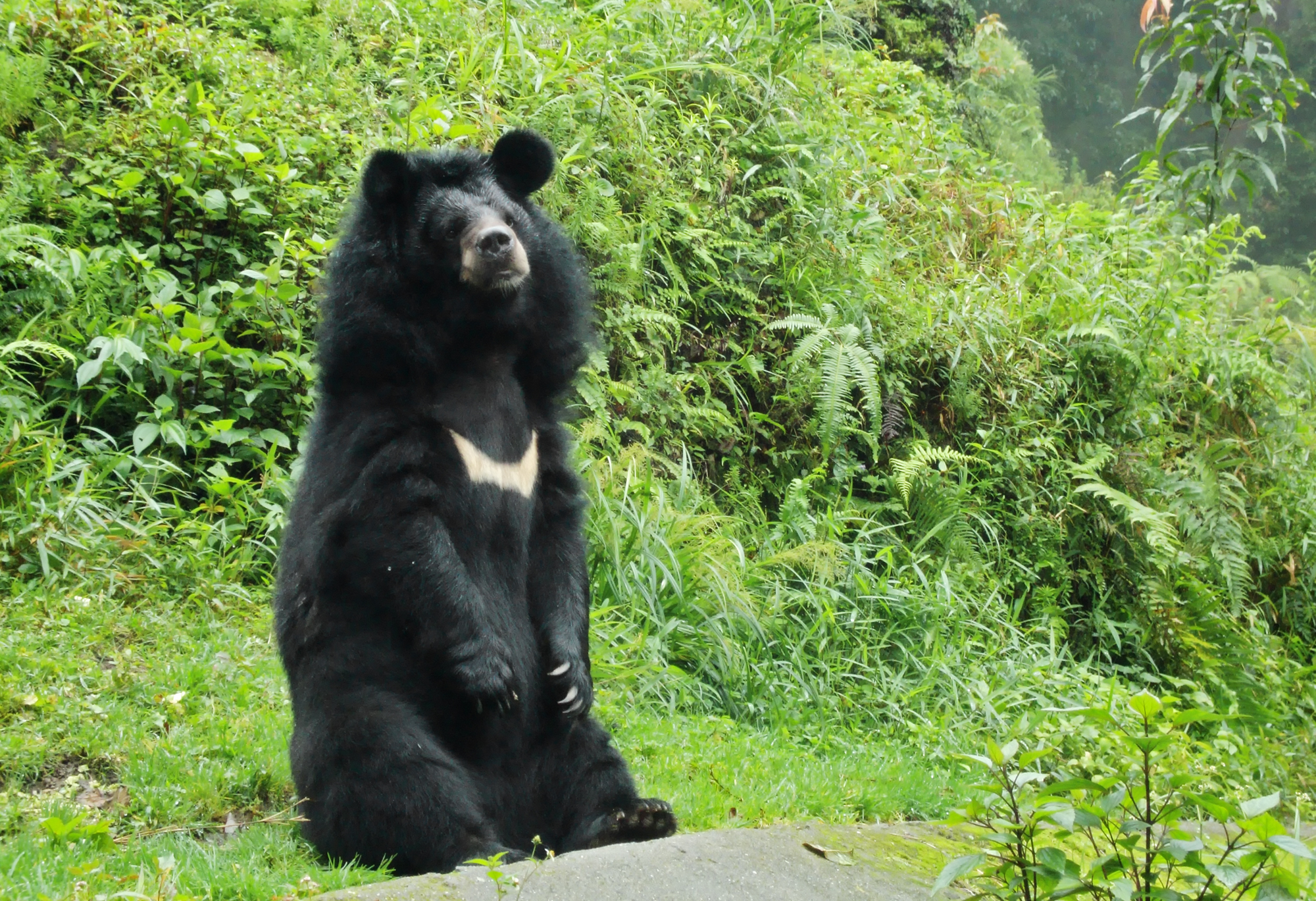
Himalayan black bear. Image credit: Creative Commons
The main threats in this ecoregion include illegal and unsustainable logging of juniper and conifers—especially Deodar cedar—and oak, which are used for fuel and timber. The forest cover in the Nuristan province, for example, has been reduced by more than 50%. In the Ziarat district, there are increasing activities of overgrazing and deforestation due to an expanding human population, while climate change decreased rainfall and led to more severe droughts. Also common in the region is the excessive extraction of water for irrigation which has affected lakes and wetlands.
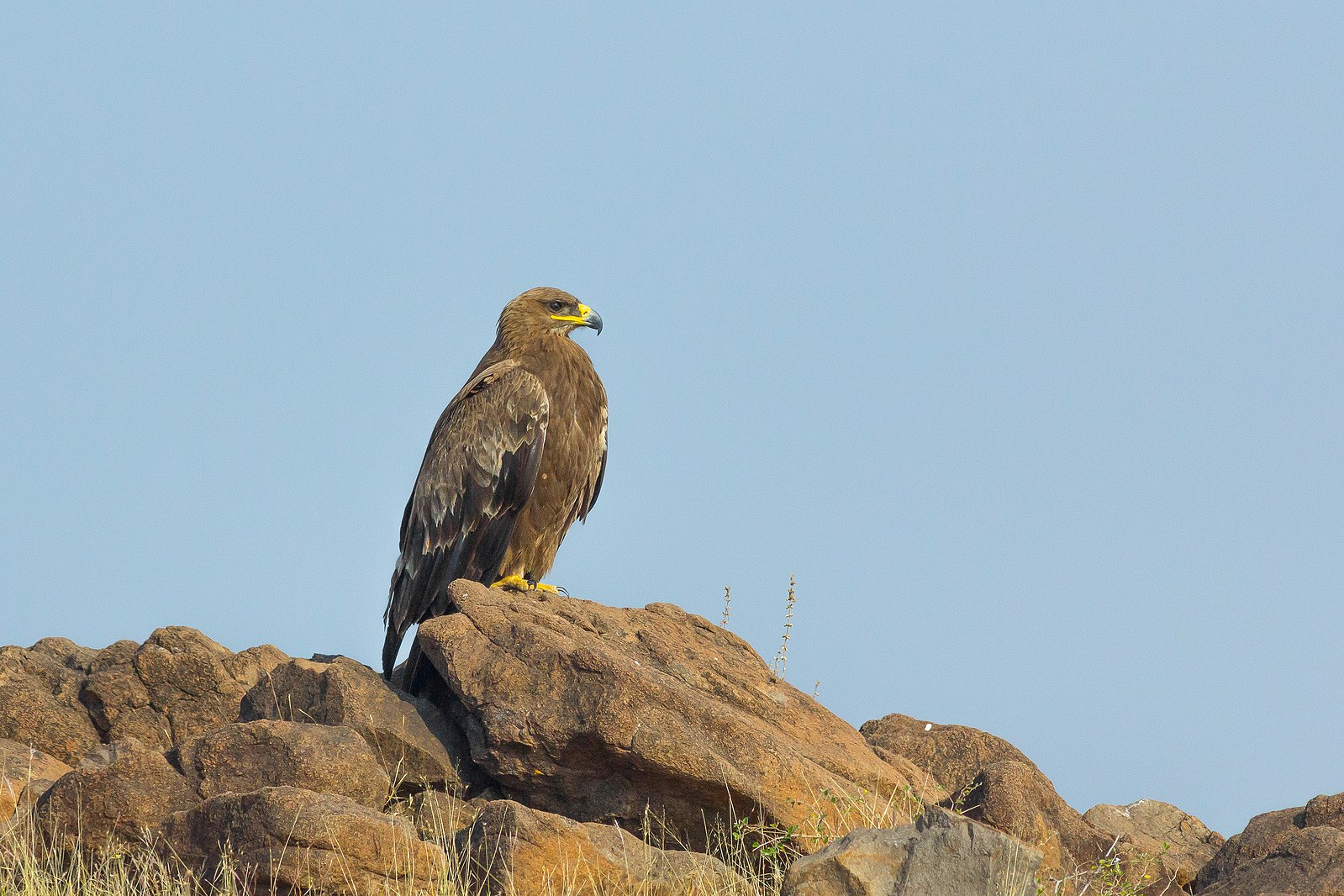
Steppe eagle. Image credit: Wikimedia Commons
The priority conservation actions will be to: 1) strengthen and expand the protected area network in both countries; 2) enhance river basin management plans to protect water resources; and 3) strengthen law enforcement to combat illegal and unsustainable use of forest resources.
Citations
- NEPA and UNEP. 2014. Afghanistan`s National Biodiversity Strategy and Action Plan.
- Ostrowski, S., Rahmani, H., Ali, J.M., Ali, R. and Zahler, P. 2016. Musk deer Moschus cupreus persist in the eastern forests of Afghanistan. Oryx. 50(2), pp.323-328.
- Achakzai, K., Firdous, S., Bibi, A. and Khalid, S. 2016. Juniper (Juniperus excelsa M. BIEB) Forest of Ziarat in Danger of Vanishing: A Review. American-Eurasian Journal of Agricultural & Environmental Sciences. 16(2), pp.320-325.
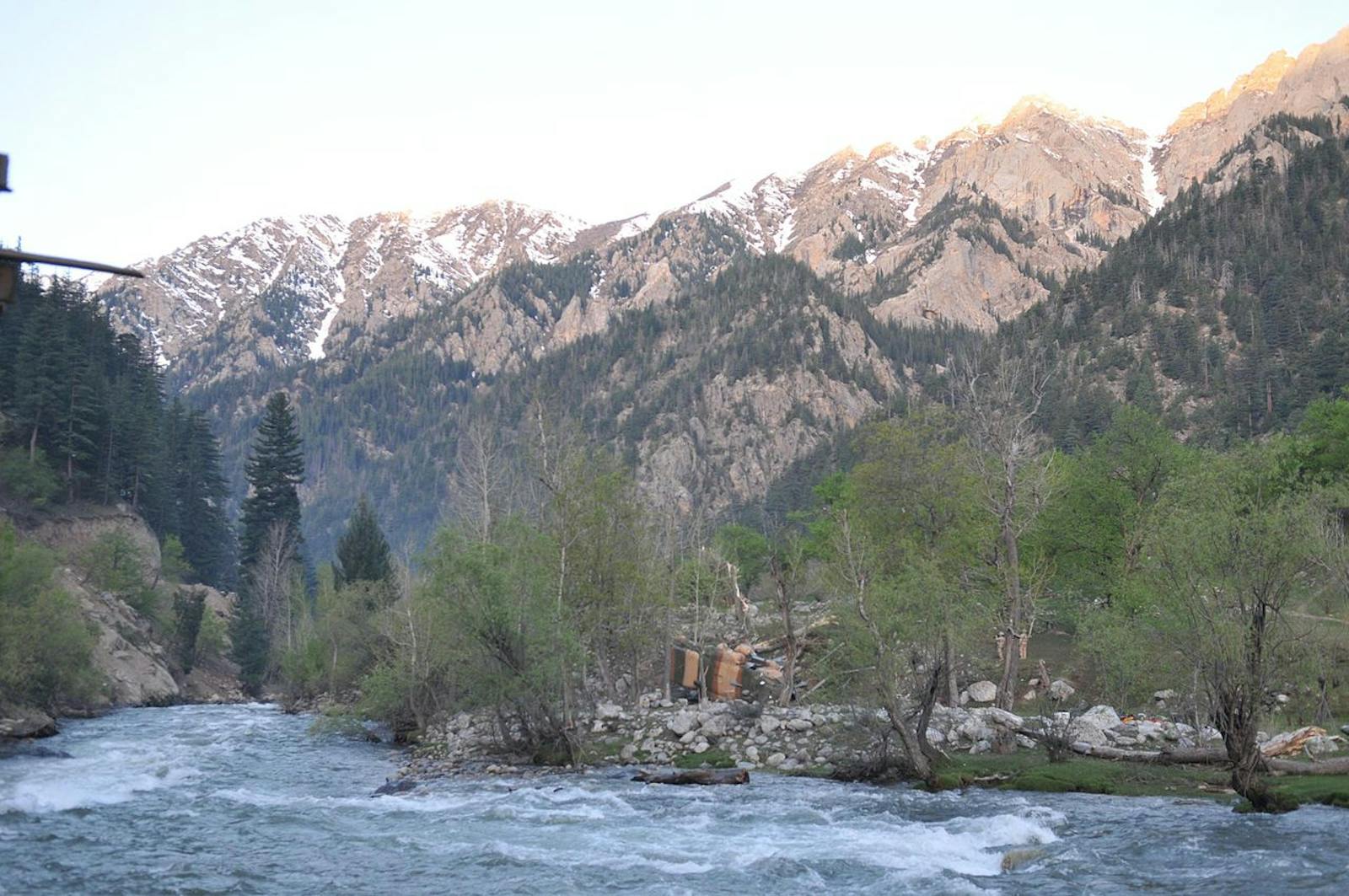
.png?auto=compress%2Cformat&w=300)

